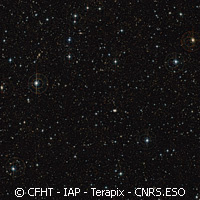Black holes activated by intragalactic forces
Most galaxies in the Universe harbour massive black holes varying in mass from about 1 million to 10 million times the mass of our Sun. To find them, astronomers look for the enormous amount of radiation emitted by gas which falls into such objects during times that the black holes are active. This gas 'infall' is believed to be the means by which black holes grow. However, in some like our own Milky Way, the central black hole is quiet. A team of astronomers say that black holes can be activated without galactic collisions, something not previously considered possible. They used data from the Very Large Telescope (VLT) of the European Southern Observatory (ESO), and the X-ray space observatory XMM-?ewton of the European Space Agency (ESA). To date, many astronomers thought that active nuclei are turned on when two galaxies pass close to each other or merge, and the disturbed material becomes fuel for the central black hole. The new study, to be published in The Astrophysical Journal, indicates that this may not be the case for many active galaxy nuclei (AGN). Viola Allevato from the Max-Planck-Institut für Plasmaphysik in Garching, Germany and her colleagues looked in detail at more than 600 galaxies in an extensively studied patch of the sky. Known as the Cosmos field and found in the equatorial constellation of Sextans, it covers an area about 10 times that of the full Moon. Specifically, the presence of AGN was revealed by X-rays emitted from around the black holes, which were picked up by ESA's XMM-Newton space observatory. These galaxy nuclei were subsequently observed using ESO's VLT, which was able to measure the distances to the galaxies. When combined, the observations allowed the team to draw up a three-dimensional map showing where the AGN lie. 'It took more than five years, but we were able to provide one of the largest and most complete inventories of active galaxies in the X-ray sky,' commented co-author of the study Marcella Brusa from the Max-Planck-Institut für Extraterrestrische Physik. Subsequently, the astronomers used the new map to find out how AGN were distributed and to compare this with predictions from theory. Furthermore, they were able to see how the distribution changed as the Universe aged - from about 11 billion years ago to almost the present day - and found that AGN are mostly found in massive galaxies. The results were surprising, because they seem to rule out distortion-producing galaxy mergers as an important cause of AGN - the generally held assumption to date. If AGN were a consequence of galaxies merging or passing close to each other, they would be found in galaxies with moderate mass. Nonetheless, most AGN were found to reside in galaxies with masses about 20 times larger than the value predicted by theory. 'These new results give us a new insight into how supermassive black holes start their meals,' said Viola Allevato, who is the lead author of the study. 'They indicate that black holes are usually fed by processes within the galaxy itself, such as disc instabilities and starbursts, as opposed to galaxy collisions.' Alexis Finoguenov from the Max-Planck-Institut für Extraterrestrische Physik, who supervised the study, concludes that 'even in the distant past, up to almost 11 billion years ago, galaxy collisions can only account for a small percentage of the moderately bright active galaxies. At that time galaxies were closer together, so mergers were expected to be more frequent than in the more recent past, so the new results are all the more surprising.'For more information, please visit: European Southern Observatory (ESO): http://www.eso.org/ The Astrophysical Journal: http://iopscience.iop.org/0004-637X/
Countries
Germany, Denmark, France, Italy, Japan, United States



